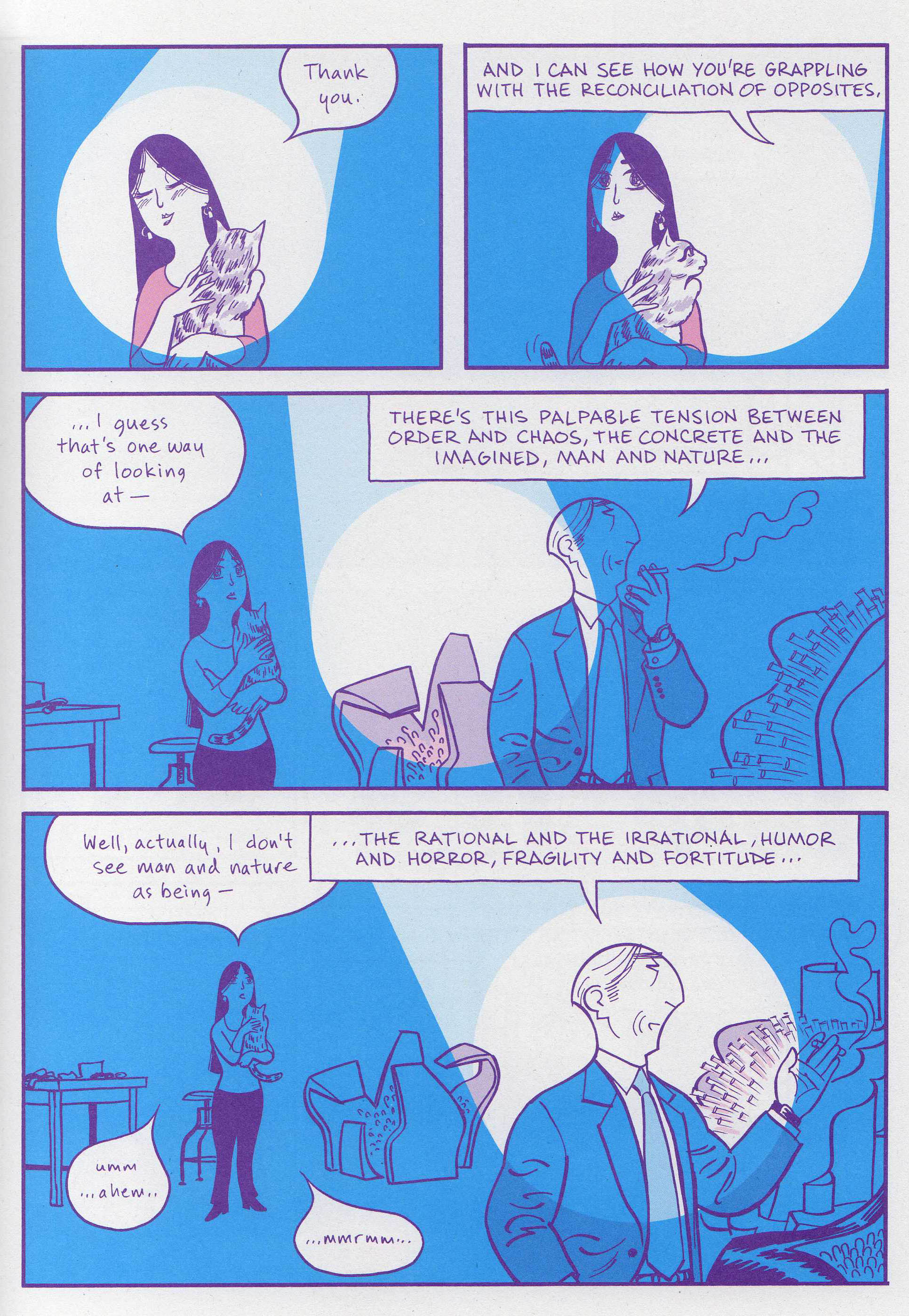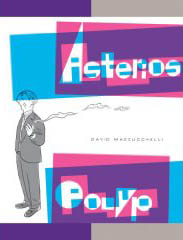
Isn’t that a great page? I love the way images and text join forces to tell you everything you need to know about the characters’ relationship. It’s from David Mazzucchelli’s much-praised, best-selling graphic-novel debut, Asterios Polyp (Pantheon). The book is pretty much front-to-back filled with great pages like that, and by “like that,” I don’t mean “told with the same visual techniques.” I mean that Mazzucchelli seems to have limitless imagination when it comes to finding inventive ways to fuse words and images (composition, line, color, style) to convey character and plot. It’s a tour de force of cartooning.
 In my experience, tours de force, while breathtaking, can sometimes end up seeming a little hollow. The artistry and technique can excuse the fact that there really isn’t very much underneath. My week has coincidentally ended up being about contemplating books with diversely amazing art. For instance, I found Daisuke Igarashi’s Children of the Sea (Viz) both visually breathtaking and emotionally satisfying, so that was good. I found the beginning of J.H. Williams III and Greg Rucka’s Batwoman arc in Detective (DC) to be dazzling to the eye and unsurprising in most other ways. Asterios Polyp falls squarely on the Children of the Sea end of the spectrum.
In my experience, tours de force, while breathtaking, can sometimes end up seeming a little hollow. The artistry and technique can excuse the fact that there really isn’t very much underneath. My week has coincidentally ended up being about contemplating books with diversely amazing art. For instance, I found Daisuke Igarashi’s Children of the Sea (Viz) both visually breathtaking and emotionally satisfying, so that was good. I found the beginning of J.H. Williams III and Greg Rucka’s Batwoman arc in Detective (DC) to be dazzling to the eye and unsurprising in most other ways. Asterios Polyp falls squarely on the Children of the Sea end of the spectrum.
For all of the craft on display, and in spite of the fact that it’s about a male narcissist with relationship problems, it’s a funny and nuanced story. (New rule: let’s only allow graphic novels about male narcissists with relationship problems to be published if they’re this good. We could form a screening committee.) Asterios is an architect and professor; he’s won awards for his designs, but none of them have ever become actual buildings. He’s a paper architect, never transcending two dimensions.
This is entirely appropriate. As the terrific page above suggests, he’s obsessed with dichotomies – life and death, organic and mechanical, order and chaos. It’s no accident that he virtually always appears in profile, a hook-nosed escapee from a cartoon from The New Yorker. It’s also no surprise that his ironically myopic world view keeps him from fully connecting with his fragile, lovely wife, Hana. It’s entirely possible that he chose her to fulfill another dichotomy – left-brain unites with right-brain, urbane weds earthy, Rea Irvin meets Osamu Tezuka. Even his nickname for her constitutes an attempt to wedge her further into his yin-and-yang perception. Fortunately for her and less so for him, Hana is not so fragile that she can put up with a lifetime of that kind of reduction.
Mazzucchelli juxtaposes scenes pulled from Asterios’ past with Hana with his more difficult present. Disaster has followed decline, and Asterios does the sensible thing – he hits the road going as far as limited funds will take him. He winds up in a small town where the people have their own interests and obsessions and are cordially impervious to any stab at condescension Asterios might make. He doesn’t wind up in Mayberry. The wisdom of the people he meets isn’t homespun; at times it isn’t even wisdom. But they have passions and nuanced belief systems, and they’re striking enough that Asterios actually listens to them. For him, it’s progress.
I’m reluctant to mention the plot or character dynamics in any more detail, because Mazzucchelli has a way with contorting familiar elements in surprising ways, and not just in the illustrative sense. Even if Asterios Polyp was just prose, it would still offer plenty of surprises. Of course, it’s about as far from being “just prose” as you can get, and I suppose it would be possible to be carried along by the immense craft of the thing. I don’t think that’s likely, as there’s splendid feeling to the thing as well.
By the way, Ng Suat Tong contributed a comprehensive reader’s guide to Asterios Polyp to The Comics Reporter. As the author notes, “this article will be of limited use to a person who has not read the book.” If you have read the, and I really recommend you do, whether for pyrotechnic displays of cartooning or for the fact that they still manage to serve a moving, intelligent story, go take a look.
